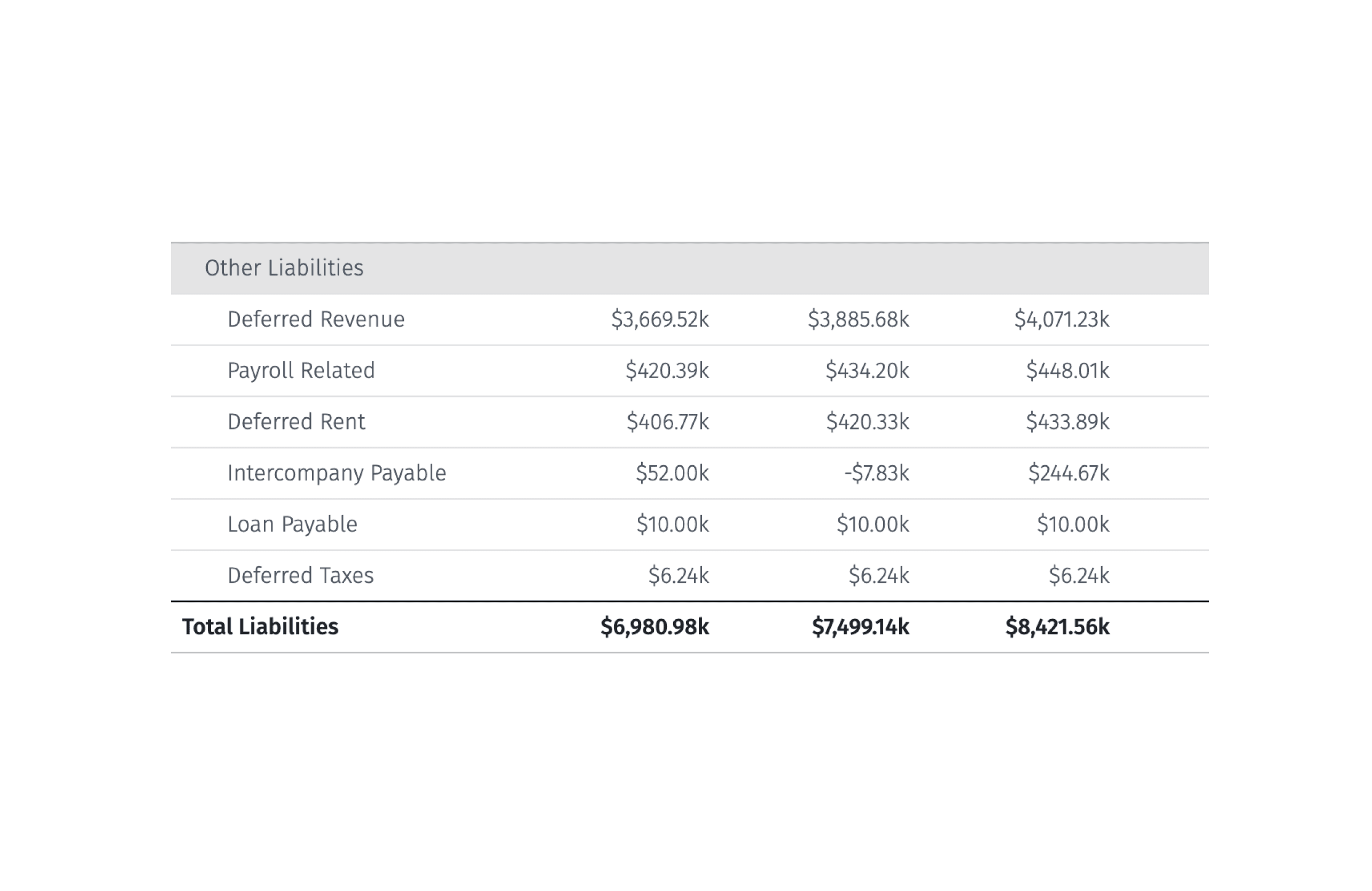Accrued Payroll
What Is Accrued Payroll?
Accrued payroll covers salaries, wages, and other compensation employees earn for a specific period that hasn’t yet been paid by the company. From an accounting perspective, the business recognizes that the payroll expenses have been incurred during the payroll period and are yet to be settled — this is crucial in ensuring accurate financial records.
For example, suppose your company’s pay period ends on the 30th of each month, with paychecks issued on the 5th of the subsequent month. In that case, your company has incurred the payroll costs for that period, even though you will only pay the cash the following month.

Categories
Considering SaaS businesses’ subscription-based pricing model, which involves recurring and deferred revenue, accrued payroll ensures that any expenses incurred during a specified period are aligned with the revenue generated in that same period. This alignment is crucial for accurately assessing financial metrics like revenue per employee, which provides insight into the company’s efficiency in generating revenue relative to its workforce size. By ensuring that payroll expenses are accurately recorded and matched with the corresponding revenue period, the financial records adhere to the Financial Accounting Standards Board’s (FASB) matching principle.
Accrued payroll can be a reliable data point for SaaS finance teams, helping them manage cash flow efficiently and ensure GAAP compliance as per accrual accounting principles (accrual method).
Table of Contents
Types of Accrued Payroll
Accrued payroll includes various types of earnings that employees have accumulated over a specific period that have not yet been provided by the company. Here are a few examples:
- Accrued salaries and accrued wages reflect the earnings employees have collected within a particular period, whether they’re salaried or paid hourly wages.
- Accrued bonuses and commissions are typically based on individual or company performance, pending payment until the month or year-end close.
- Accrued vacation and sick pay represent the monetary equivalent of earned time off that the employee has not taken.
- Accrued benefits are costs incurred by the company for employee benefits like health insurance, and retirement plan contributions during a period, but yet to be provided.
Regardless of the industry, the various types of accrued payroll are usually consistent for most businesses. Although how these items are managed and recorded could differ in SaaS, especially with aspects like remote or flexible work, the fundamental principles of accruing these payroll items are consistent across industries.
Get The Month-End Close Checklist
5 Steps to Calculate, Track, and Record Accrued Payroll
Calculating accrued employee payroll doesn’t boil down to a single formula, as there are multiple variables involved. Having said that, there are five steps you could take to correctly calculate, track, and record accrued payroll for your company.
1. Identify the Pay Period
To calculate accrued payroll, start by identifying the pay period. This could be weekly, bi-weekly, semi-monthly, or monthly. If the payroll is based on wages, collect the time records for all your team members within that span, noting down the number of hours worked, overtime, and any other time that counts towards their pay.
2. Calculate Gross Pay
Moving on, calculate the gross wages or pay for each person on your team. If they’re paid by the hour, multiply the hours they’ve worked by their hourly rate. For those on a salary, divide their annual salary by the number of pay periods in the year to get the gross pay for that particular period.
For example, if the employee’s annual salary is $60,000, divide that by 52 to calculate their weekly rate, then divide that by five to get their daily rate. Most finance teams rely on payroll software to calculate these numbers automatically, as manual calculations can result in mistakes.
3. Consider Any Additions
Account for any additions to the gross pay, such as commissions, bonuses, or other additional earnings. Then, tally up the deductions for each employee, which could include payroll taxes, health insurance premiums, and retirement plan contributions.
4. Determine the Net Pay for Each Employee
Next, find the net pay for each employee by subtracting the total deductions from the gross pay. Also, remember that your accounting period might not be in sync with the pay period. So, as you near the end of the accounting period, calculate the accrued payroll by figuring out the wages payable. If the accounting period ends in the middle of a pay period, prorate the gross pay based on the number of days worked.
5. Record the Journal Entry
Now, you hit the books. Make a journal entry to debit the “salaries expense” account and credit the “accrued salaries” account with the total accrued payroll amount. Most importantly, remember to keep a detailed record of all calculations, assumptions, and entries — this is critical for creating a clear audit trail and ensuring everything meets compliance standards.
By following these steps, you’ll be on track to keeping your payroll calculations clear and compliant.
Learn More About Mosaic Financial Close Software

Example of an Accrued Payroll Journal Entry
For example, imagine you’re running a SaaS company where your team members have been working tirelessly throughout June, and it’s now the end of the month. However, the payday for this period is on July 5th. Now, even though you haven’t yet paid your team for their efforts that month, from an accounting standpoint, you’ve incurred these salary expenses in June.
The total payroll for June amounts to $50,000. From an accounting standpoint, you’d create the following journal entries at the end of the month:
- Debit your salaries expense account by $50,000 to reflect the expense incurred by the business.
- Credit your accrued salaries liability account by $50,000 to reflect the amount owed but not paid out yet.
Here’s what that might look like in the general ledger:
| Date | Entry Title | Debit ($) | Credit ($) |
|---|---|---|---|
| 30th June | Salaries Expense | $50,000 | |
| 30th June | Accrued Salaries Liability | $50,000 |
These entries show that you’ve recognized the expense in the month it was incurred, June, even though the cash will only leave your bank in July. This way, anyone looking at your financial statements will get an accurate picture of the company’s financial health, as expenses match the revenue they help generate.
Challenges of Managing Accrued Payroll
Navigating the intricacies of payroll accounting, particularly accrued payroll, requires knowledge of complex regulations that can vary significantly across regions. There’s no wiggle room in ensuring the accuracy and timeliness of these records, mainly as companies aim to avoid financial discrepancies and ensure employee happiness. Think about it: would anyone be happy when they’ve done the work but aren’t paid on time — especially with bills and mortgages on the line?
When considering variables like overtime and sick days, precisely estimating accrued payroll can be challenging. Additionally, the diverse nature of payroll management, which consists of hourly employee wages, salaries, overtime, and bonuses, further complicates the calculation process. For multinational companies, the challenge extends to managing cross-border payroll amidst varying tax laws and regulatory frameworks.
This is why accuracy in financial records is necessary, ensuring audit readiness and compliance. Manual processing in Excel is often susceptible to errors, so efficient finance teams rely on automation as well as integration with other business systems for enhanced efficiency.
Mosaic’s Tech Stack Can Help With Accrued Payroll
Accrued payroll isn’t something that you should have to worry about calculating or even think about recording — in a perfect world, it’s accounted for automatically with 100% accuracy each pay period.
But you’re not always operating in an ideal world. Integrating your HRIS and ERP systems with a Strategic Finance Platform like Mosaic helps you deliver comprehensive financial statements, variance reports, and flux analysis faster than you could ever do it in a spreadsheet at the end of each month. This not only makes it easy to spot potential issues but also makes sure the financial data remains up-to-date.
Request a demo to see Metric Builder in action.
Accrued Payroll FAQs
Is accrued payroll a current liability?
Yes, payroll accrual is considered a current liability as it represents money owed to employees for work done but not yet paid by the company. Typically, the company will settle the amount within the next accounting period.
What is the difference between accrued expenses and accrued payroll?
Where should accrued payroll appear on a balance sheet?
Can you deduct accrued payroll on taxes?
Explore Related Metrics
Own the of your business.




